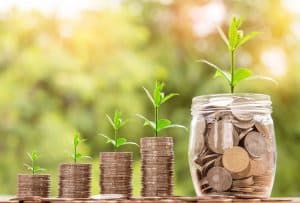Drivers for financial Inclusion of women

Poverty, inequality, and human development are profoundly interlinked, and women and men having equal legal rights are of paramount importance. Only six countries in the world have been able to achieve it so far. Another eye-opener for all of us is to know the fact that, not a single country in the world has been able to achieve economic equality between women and men yet. In 2015 world leaders met at United Nations to address and set 17 global goals, which, when achieved, would help end extreme poverty by 2030. Out of those 17 goals, the global goal number 5 aims at empowering all women and girls because if half of the population in the world continues to be disadvantaged, we cannot make holistic progress at all. I firmly believe that the Economic and Financial Inclusion of women should be at the centre of all the initiatives towards achieving economic equality between men and women globally.
Drivers for financial Inclusion of women:
An extensive set of research has shown that poverty and inequality are interlinked from the root. Women/girls still earn less, learn less, own less, and hold significantly less economic power than their brothers and husbands. This has negative consequences on women’s health, schooling, job prospects, and even the control women have (or lack ) over their own lives. There are several different ways in which we can include women within our financial systems:
· Through the active participation of women in the financial system, they can better manage home economics.
· Providing lower-income women with the right financial tools is vital for women’s empowerment and poverty reduction both, especially since women disproportionately experience poverty.
· Financial tools can enable and empower women within households to make decisions and gain greater control over resource management through appropriate allocation of resources.
· Women’s Financial Inclusion can result in better outcomes for children, household nutrition, and the various aspects associated with home management. One won’t need much imagination to think of a multiplier positive effect on the wider community when all women within every household are empowered.
Major Constraints:
Unfortunately, there are several constraints and obstacles that prevent women from financial inclusion and a more equitable society:
Social Constraint: It is essential to acknowledge that broader social constraints related to the social status of women and intra-household struggles limit the broader impact of financial Inclusion on women’s economic empowerment. While these constraints that are beyond the scope of financial inclusion programming, it is crucial to recognize them to ensure financial Inclusion has the desired impact.
Psychological Constraint: The psychological barriers are observed to be embedded in gender norms surrounding women, including perceptions that banks and economic participation are not for them.
Financial Constraint: Women do not have enough money to have an account (because they are dependent on the earning male of the family), that a bank does not add value to their money, and that they do not have the literacy or familiarity with banks.
Other Challenges:
-
In the first place Identifying the excluded women is harder. Household surveys are meant for that, but they too are time-consuming and expensive. Still, they are the only useful and accurate mechanism for identifying people who are outside the banking system.
-
Financial institutions find it difficult to reach women through the usual channels that they use to target men since women not being used to manage financial matters independently.
-
Financial service providers have minimal incentive to cater to women because the margins they can earn are smaller and women require more upfront investment to bring on as customers.
-
Traditional and social norms, at times, acts as constrain for women’s need or demand for financial services. Often women are not expected or encouraged to have financial independence as that domain has incorrectly been perceived to be managed by men.
-
Women have less access to technology, though it is not specific to women only as poor communities generally have less and or limited access to technology, particularly in rural sectors.
Solutions: Sustained and relentless effort is key
At national and subnational levels, essential steps forward include the making of policies, programmes, and projects, as well as financing, implementation, monitoring & evaluation. This also means taking accountability and understanding our civic responsibility to make sure we help each other, promote project’s/policies and make sure they are not misused.
-
Access- Increasing access to technology and finance. E.g. organizations like ‘Aftertaste’ provide women with the opportunity to become financially independent, as well as giving them exposure on how to deal with their finances. Other than that if we provide them with access to user-friendly technology, it will be easier for them to manage their money, and also feel more confident and empowered. We can even develop technology that is context and situational specific. For example, the “Sukanya Sam Riddhi” Account is a Government of India backed saving scheme targeted at the parents of girl children. The scheme encourages parents to build a fund for the future education and marriage expenses for their female child.
-
Trust/Comfort– Our target audience, which is the women from low-income backgrounds, not only are uneducated but are also unwilling to learn a lot of things because of societal norms and their psychological undercurrents. So, we need to create a trustworthy environment for them and first make them understand why it is so essential for them to be financially independent/stable. Then we can make them comfortable with new technologies and concepts to include them in economic activity further. We also need to work for inclusion of women in the decision-making process so that they can take financial responsibility, participate in economic activity, gain their independence and eventually lead to their personal growth. Microfinance has been an effective economic tool adopted by many African and Asian countries to allow women to invest in small businesses and save for the future and work their way out of poverty. Microfinance has provided basic financial services to millions, first through credit and now through a full suite of products like savings, pension fund and insurance.
You can be part of the change by joining TribesforGOOD’s program for Financial and Digital Inclusion.
Featured Image Credit: Freepik


Author: Rucha Raut is our Young Changemaker 2020 who worked on Storytelling for Change.


